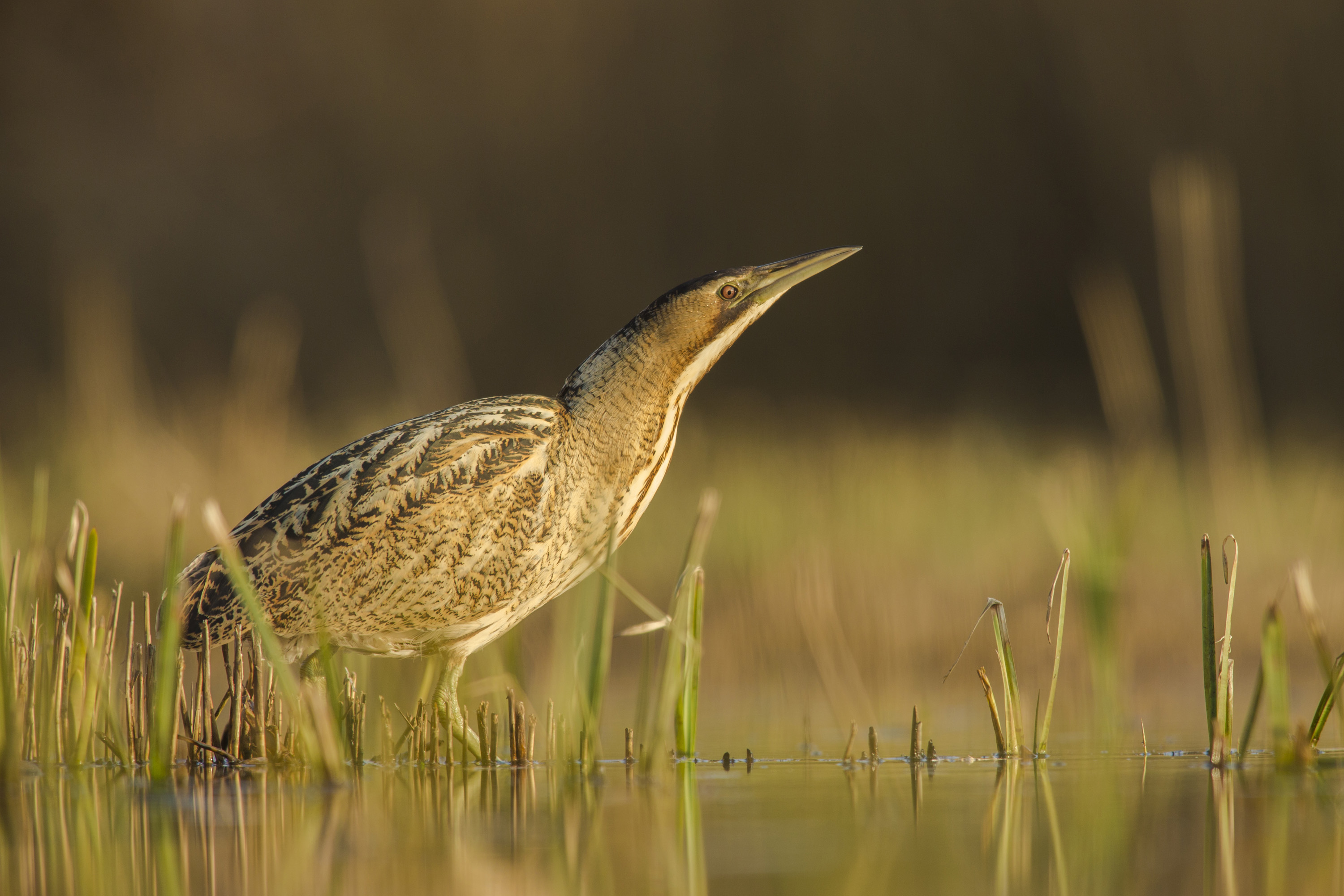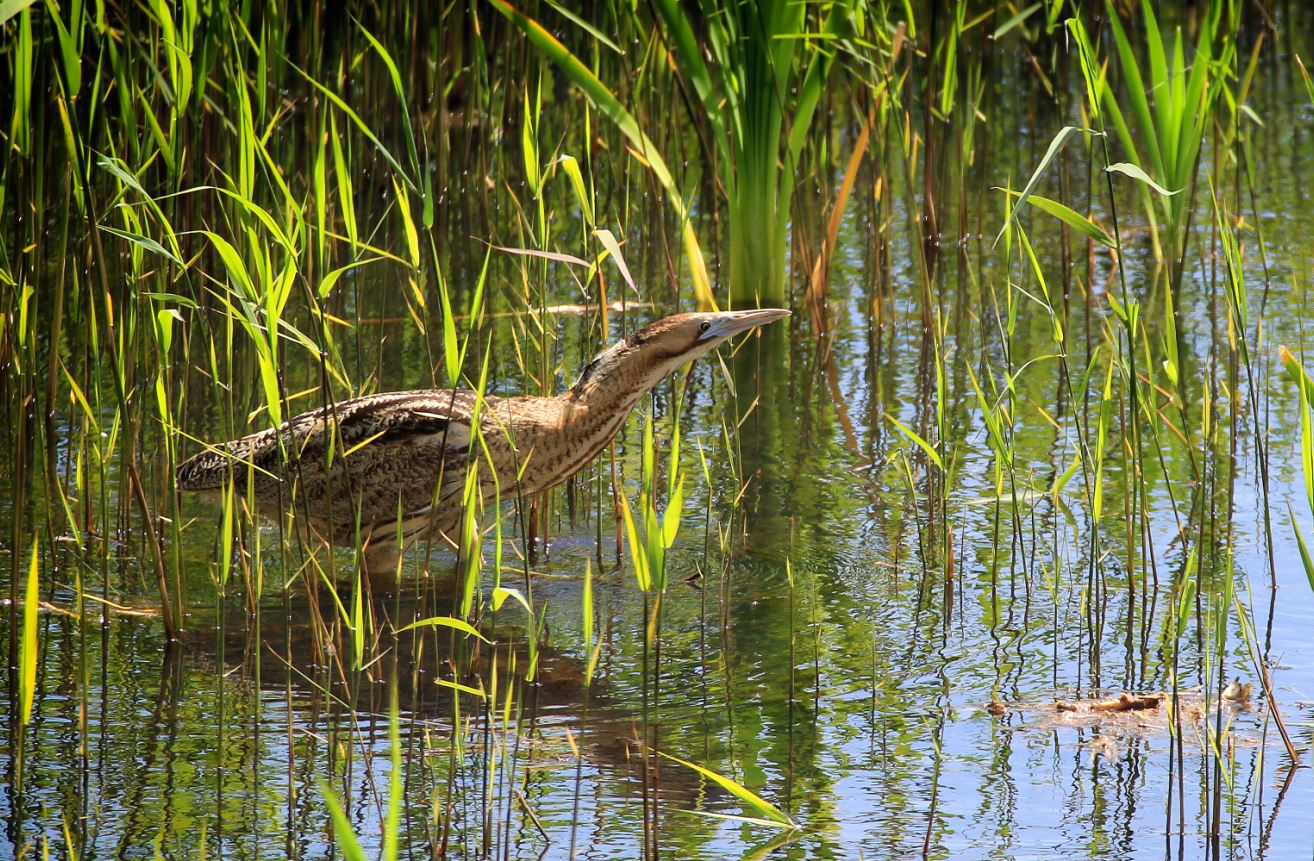The Invisible Bittern, Voted Spain’s Bird of the Year 2024

By Jose Luis Gallego, environmental communicator (@ecogallego)
The great bittern is a medium-sized waterbird that is both rare and difficult to spot. Recently it was named Spain’s Bird of the Year 2024 by SEO/Birdlife, a Spanish conservation organization, based on votes cast by more than 5000 people.
This curious species of Ardeidae, which ornithologists classify under the scientific name of Botaurus stellaris, is at high risk of extinction. Its critical situation also reflects that of the main Iberian wetlands, which serve as the bird’s habitat – places like the Ebro Delta, Doñana, or Tablas de Daimiel.

A bittern in its natural habitat. Source: SEO Birdlife Jamie Hall – Shutterstock
Following three years of severe drought caused by climate change and exacerbated by aquifer overexploitation, the precarious condition of these three important natural spaces, along with most Spanish wetlands, is threatening the rich biodiversity that is found here.
Among bird lovers, the bittern is known as the “phantom of the marshes”, because it is one of the most elusive and difficult-to-spot species of all Iberian fauna. Field biologists hoping for a bittern sighting don’t have it easy: the bird excels at camouflage thanks to the cryptic colouration of its plumage – cream streaked in shades of tawny and greyish brown – and its ability to stay hidden among the marshland vegetation for extended periods of time.
The only thing that gives the bittern away is its strong and distinct call: a deep, dry bellow, repeated time and again, that echoes through the wetlands, especially during the months of February and March, which coincide with the species’ mating season. It is precisely this bellowing call, which resembles that of a cow or bull, that has earned the bird its Spanish common name: avetoro or “bull bird”.
Often the best way of finding and identifying wild birds is through the sounds they make. Sometimes it is the only way, especially when it comes to species, like the bittern, that blend perfectly into the landscape around them. Despite the bird’s remarkable size – bitterns grow to 80 centimetres in height, weigh around 1.5 kilos and have a wingspan of 1.3 metres – it is almost impossible to spot these birds when they are concealed among the vegetation.

A bittern among reeds. Source: SEO Birdlife, Mark Caunt - Shutterstock
An exclusive wetland dweller, the bittern prefers areas where water levels remain stable, surrounded by extensive reedbeds. The species can also be found along riverbanks and in rice fields, salt marshes, and swamps with plenty of vegetation. Its diet is based on aquatic insects, fish, amphibians, reptiles, and tiny mammals such as shrews. Bitterns are particularly fond of American red crabs, making them a valuable ally in controlling this invasive species.
With regard to its conservation status, the bittern’s election as Bird of the Year provided SEO/Birdlife with an excellent opportunity to draw attention to the precarious situation of Iberian wetlands. Together with the consistent decline in bittern populations over the past 40 years, this paints a very uncertain future for the species.
At this time, the bittern is listed as a critically endangered species in the Libro Rojo de las Aves de España, a publication that keeps track of the conservation status of birds. Hearing the call of the bittern is becoming increasingly rare, even in wetlands where the bird was found until recently, such as Albufera on Mallorca or Aiguamolls in the Empordà region of Catalonia. According to the latest census count, bittern populations across Spain are so low that there might be as few as fifty territorial males.
All experts agree that averting the bittern’s extinction requires measures integrated into an ambitious nationwide campaign to regenerate and protect Spain’s wetlands. Recent studies reveal that 85% of wetlands present an alarming rate of degradation.
If we fail to stop the over-exploitation of aquifers and do not implement a nationwide plan to mitigate the detrimental effects of drought on our wetlands, the bittern’s fate is sealed – along with that of the other waterfowl that inhabit the Iberian Peninsula.
